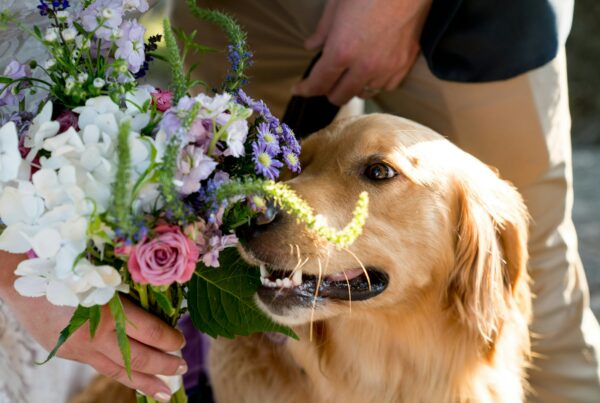There is no doubt that if you are a pet owner and plan to move long distance, you will be bringing with you your furry friend. Without them, your new home would just not be the same. Packing up your current home and starting over in a new place, whether you’re moving a few miles down the road or to a new city, can be challenging. When you add a long-distance move and a pet (or pets) to the mix, it may seem incredibly difficult to have a stress-free moving experience.
Naturally, with such a big move up ahead you are probably also worrying about how this could go for them. It’s important to plan ahead and prepare your pet for the journey. Keep reading for tips on how to end up making the trip as smooth as possible for both you and your beloved pets.
Review Regulations
Before you get on the road, make sure you know and follow any animal-related rules and regulations for your new state, town, association of homemakers, apartment complex etc. A veterinarian and up-to-date vaccination certificate is required in various states, and some areas have certain race prohibitions that you should be made aware of.
It is also worth noting that there are some more rules and regs for movements out of the continental United States. If you are moving to Canada, for example, be sure to check on their policy for importing bringing animals in.
Plan a Veterinary Visit
Before you move, you first want to contact your vet. Request copies of health records and proof of up-to-date vaccinations for your pet. It can be useful for you to stay overnight on your way to your new home in a pet friendly hotel if the trip is too long and if your pet is prone to having health issues on the road. Another hack we recommend is to use a tele vet service and map out various vets ahead of time along your route in areas that may be dead zones for your cell phone.
You may also want to discuss with your vet the possibility of sedating your pet while on the journey. There are a lot of options you can consider when it comes to medication, even herbal medication. Your vet will advise you on what’s best for your pet.
Motion sickness is another thing to consider. There are many people who don’t know that some pets get car sick. It can make for a long, miserable journey. You need to also discuss this possibility with your vet and get advised on what’s the best course of action.
Plan What to Pack for the Trip
When planning a long drive, you need to keep in mind that especially if you are traveling with a dog, they will need frequent breaks – every few hours at least. You should take at least a 15-30 minutes break to allow your dog to answer nature’s call. Consider that also food timing depends on the needs of your pet and the movement sickness inclination.
In any case, you need to take some time to make a list of all details related to your pet’s needs before you get to the road, such as:
- Food, water, bowls, medicine, carrier/leash and disposable items, toys and anything else your pet might need on the road
- Where you’re going to stop for bathrooms and food breaks.
Keep your Pet Safe During the Move
First goal is to identify how your pet can be protected during movement and travel. Keeping your animal safe is essential, so it doesn’t escape or get hurt.
If you have a dog, considering their more curious nature it may be a good thing to keep it in a spare room, fenced back yard or crate during the process of loading up your belongings. Think about how and where your pet might feel more comfortable so that it puts the least amount of stress on them.
It can also be easier for you both to send them elsewhere during the loading process. Opening doors, extra people and the general turmoil of the day can create stress and confusion, which can lead to escape. Consider keeping them with a family member or with friends or in a boarding house.
Understand Your Pet’s Needs
Every animal can present unique challenges in a move regardless of whether you have a large, fluffy dog, an energetic cat, or a social bird. You need to constantly keep an eye on them during your trip and try to understand what they are feeling and what can you do to help them.
If you are traveling with a dog, keep track of these common signs of stress throughout the moving process:
- digestion issues
- aggression
- lack of appetite
- sleepiness
- reduced response to stimuli
Try to enhance play and exercise if you notice any of these signs because it can help alleviate anxiety. Give your pet also an object to ensure comfort—such as a familiar bed, toy or blanket and of course, talk to a veterinarian if these symptoms continue.
Make your Car feel Comfortable and Safe for Your Pet
Consider next how your vehicle will be arranged. It is important for your pet to lay or sleep in a comfortable and safe place. It can make a huge difference if you can position your dog close to you so they can be reached for a pat. Set the carrier, if possible, where you can see them.
You need to schedule several further stops to walk and snuggle when bringing your dog with you. However, you should open up the carrier as little as possible if you are traveling across the country, to prevent them from escaping into an unfamiliar region due to fear or stress.
If you are using a carrier, it has to be large enough to allow your pet to sit down or sit comfortably (or loose enough). If you are using a harness, it should have a pivoting clasp to allow a complete spectrum of motion without the risk of strangulation.
Consider three things when the carrier is placed in the car:
- The box is secured. To secure the container, use either a seatbelt or strap (or put it where it will not slide onto the floor board).
- Sight line. Place your dog’s kennel to see you. This can contribute to alleviating anxiety.
- Airflow. – Airflow. Without blowing directly into his face he should have access to the airflow. Don’t roll the windows down far enough to stick his head out though, as that can be quite dangerous.
Settling in the New home
Like children, animals need time to adapt to a new environment. Before they let them explore, inspect dangerous objects or places they could escape. When you start unpacking, the first things you should set up are their cage, bed, food, water, etc. so that they have familiar things all around them .
Allow them to sniff. Let them wander around to get to know their new space if they are not restricted to a cage or any other container. Last but not least, it’s important for dogs especially to try to stick to their usual schedule for feeding, walking and play time. This will allow them to adjust more easily to the new move!
About the Author
Michaela Smith is the marketing director of Empire Movers, a well known commercial moving company based in New York. With over 15 years of experience on the market, the company has accumulated great expertise in all areas related to the process of moving, including how to handle animals during and what to do to make them feel less anxiety.
Familiar with the ins and outs of a long distance move, now get geared up for How to Prep Your New Home so Your Dog Adjusts Smoothly.
Love our content? Share it with a friend or link it to social media. Like short clips of cute household pets? Training tips? Follow us on instagram @nydognanny or on YouTube at nydognanny. Have some news you needs to get to dog and cat parents stat? Email info@newyorkdognanny.com with your article pitch.




